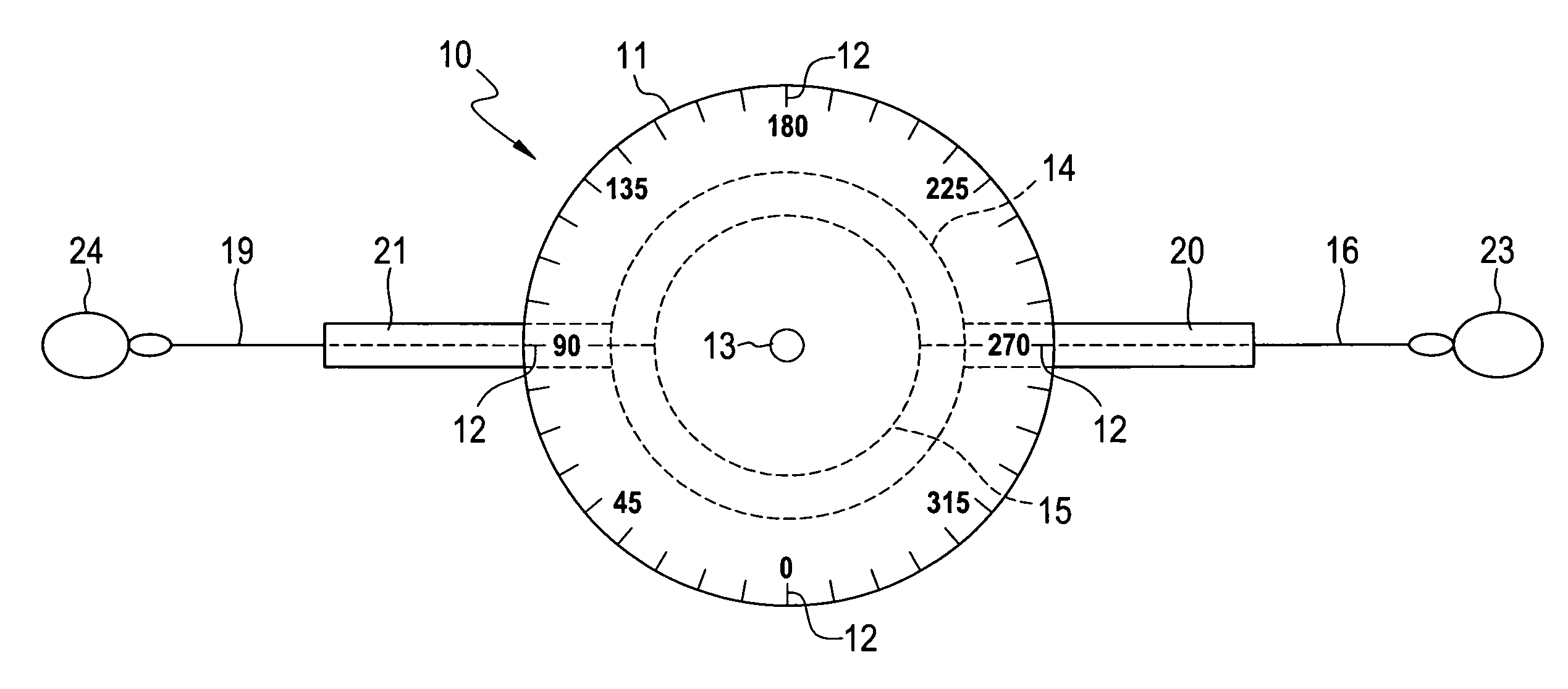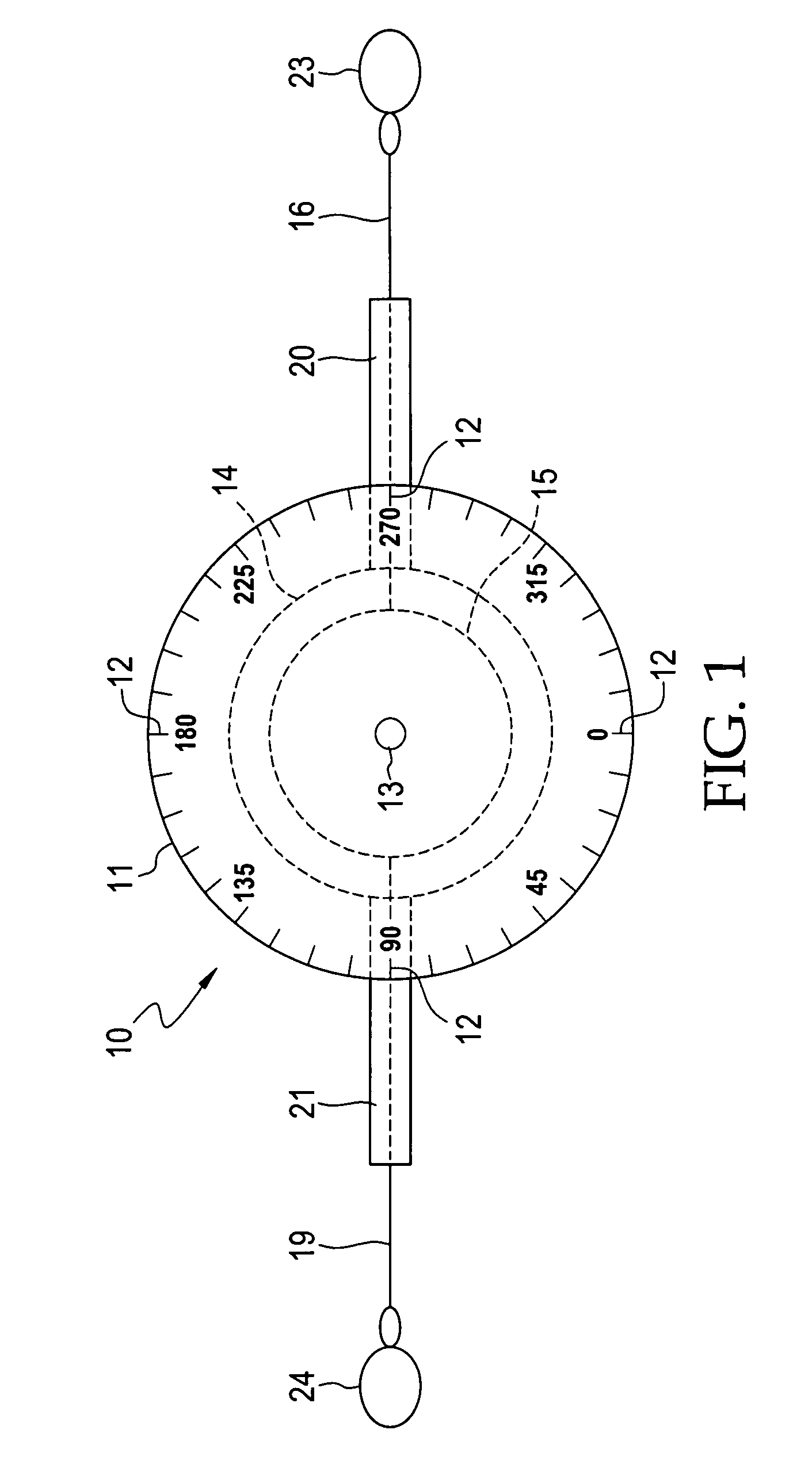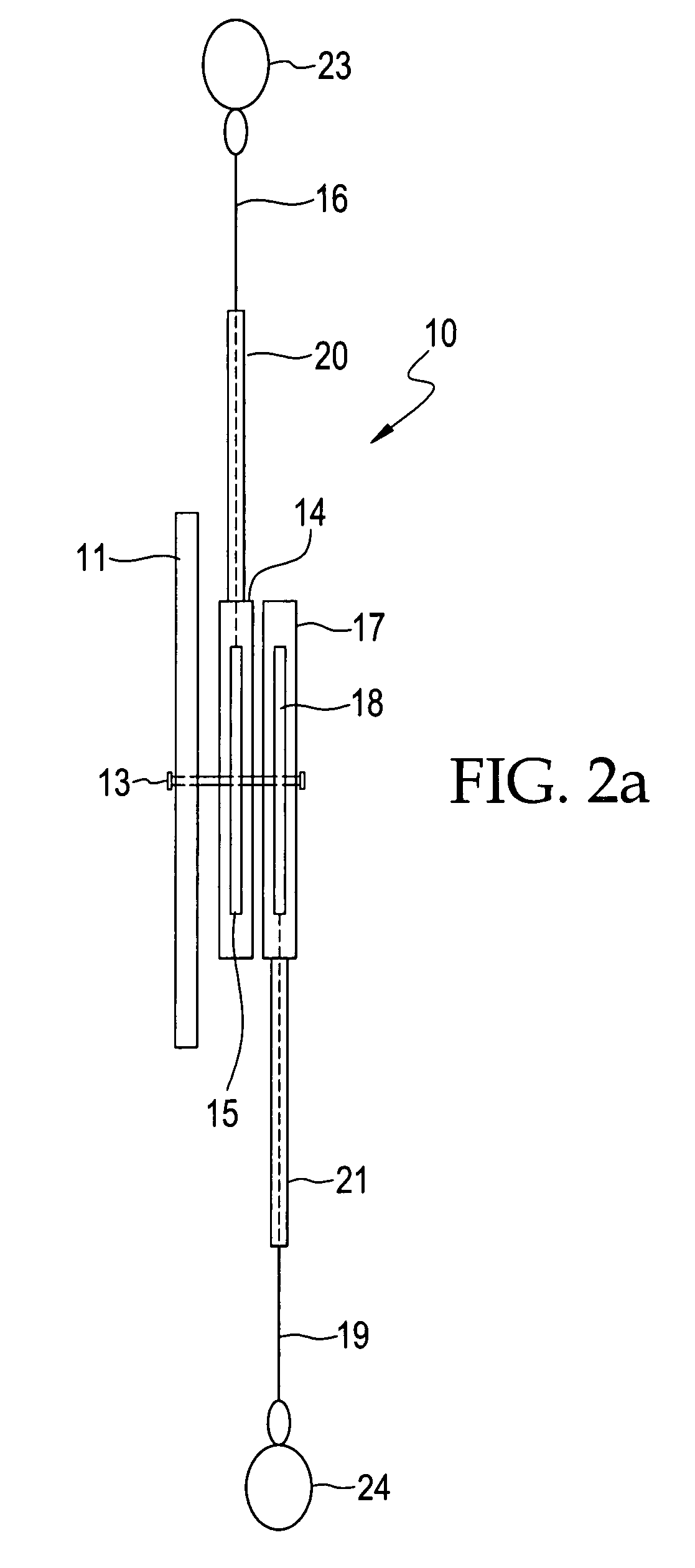Dual line protractor for biometric measurements
a biometric measurement and protractor technology, applied in the field of goniometers, can solve the problems of inconvenient use, inconvenient use, and inability to measure the motion of the limb intended to be measured, and achieve the effects of convenient use, high precision and accuracy, and simple dual line protractor
- Summary
- Abstract
- Description
- Claims
- Application Information
AI Technical Summary
Benefits of technology
Problems solved by technology
Method used
Image
Examples
Embodiment Construction
[0018]While the following description details the preferred embodiments of the present invention, it is to be understood that invention is not limited in its application to the details of construction and arrangement of the parts illustrated in the accompanying drawings, since the invention is capable of other embodiments and of being practiced in various ways.
[0019]FIG. 1 shows a front view of the dual line protractor 10 of the present invention. The protractor 11 has degree marks 12 typical of protractors known in the art. The protractor 11 is, preferably, a 360 degree protractor. Protractor 11 is fixed to a central axis 13. Behind protractor 11 is a first circular housing 14 which is attached rotatably to the central axis 13. A first spool 15 is inside first housing 14 and first spool 15 is also attached rotatably to the central axis 13. A first line 16 is wound around first spool 15. First spool 15 is biased to retract or rewind first line 16 onto first spool 15, by mechanisms w...
PUM
 Login to View More
Login to View More Abstract
Description
Claims
Application Information
 Login to View More
Login to View More - R&D
- Intellectual Property
- Life Sciences
- Materials
- Tech Scout
- Unparalleled Data Quality
- Higher Quality Content
- 60% Fewer Hallucinations
Browse by: Latest US Patents, China's latest patents, Technical Efficacy Thesaurus, Application Domain, Technology Topic, Popular Technical Reports.
© 2025 PatSnap. All rights reserved.Legal|Privacy policy|Modern Slavery Act Transparency Statement|Sitemap|About US| Contact US: help@patsnap.com



